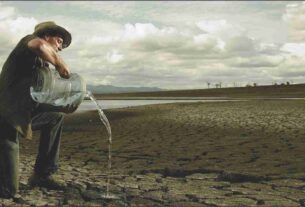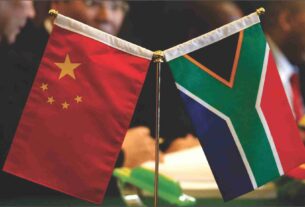China-India relations
A week after castigating India for the Prime Minister Narendra Modi’s visit to Arunachal Pradesh in late February, China talked of preparing hard for the success of his visit to Beijing and other Chinese city in mid May this year .
China thus speaks in two languages while talking of relations with India and try to cajole it to join Chinese schemes and projects like the One Belt One Road and the Maritime Silk Road etc while simultaneously asking India to leave the resolution of the contentious issues to the next generation. China had earlier raised eyebrows after India announced the tango of its newly revised ‘Act East’ policy with the US Rebalancing Asia policy.
But the Chinese envoy in New Delhi Le Yucheng has spoken of the possibility of Elephant-Dragon tango and talks of development as a common strategic goal for both India and China. The Narendra Modi led NDA government has also continued with the two pronged approach on India’s relations with China. Signals emanating from China are the same towards India.
Bonhomie in the Capitals while militarily challenging each other at the very long undefined borders. The leaders of two countries display lot of love and affection in their capitals but show confrontationist attitude not only on the borders but also on the strategic front. Both view each other with suspicion. Both contest each other in their maritime areas. Not only India has complaints with the Chinese government on trade related issues, India views with suspicion the Chinese plans to invest in India’s telecom sector and has placed many restrictions on visas to Chinese businessmen, yet the bilateral trade between two nations has risen to the level of US$ 68 billion and two countries are integral part of multilateral fora like the six nation BRICSA and three nations India , Russia and China group, where the two estranged neighbors often issue statements like a co-brother.
Challenges
Yet the armies of the two nations face each other on a 4000 km long Line of Actual Control on the mountainous terrain, the resolution of which is of paramount significance for India. The two countries are also fiercely engaged in marking its presence felt in each other’s maritime area.
The decision to align India’s Act East policy with the Rebalancing Asia policy of the USA in the joint Asia pacific vision statement after the US President Barack Obama’s visit to India on the eve of Indian Republic Day, has irked China. And the latest cause of Chinese annoyance was the visit of Prime Minister Modi to Arunachal Pradesh in the third week of February.
India has therefore been focusing on early agreement on boundary and territorial issues to eliminate this major cause of tension between India and China and expected a cordial atmosphere before the visit of Prime Minister Narendra Modi in late May this year. However, when Mr Modi visited Arunachal Pradesh in late February, the Chinese government expressed its indignation by going out of the way to summon Indian ambassador in Beijing to the Chinese foreign office , which has been taken exception by Indian diplomats. The Chinese could have protested simply over Modi’s visit to Arunachal in an ordinary diplomatic demarche to the Indian embassy or to the Indian External Affairs Ministry in Delhi, to set the records straight on its position on the territory.
The Chinese have thus vitiated the cordial atmosphere that should have been created before Modi’s visit about which there are reports that President Xi Jinping will break the protocol by showing extra courtesies for Modi. Before PM Modi’s visit to China External Affairs minister Sushma Swaraj paid a crucial visit to Beijing to lay the ground work for his visit and sought to allay Chinese concerns over a joint Indo-US vision statement during President Obama’s visit in the first week of February over the Asia pacific region. In response China hinted that it would make it difficult for India to become a member of 45 member Nuclear Suppliers Group. China’s obstructionist attitude to the Indian memberships to various international regimes including the UNSC will definitely not help generate warmth in the relationship.
Hence, Ms Sushma Swaraj while addressing the India-China media forum in Beijing in early February, laid a six point template to develop relations which include-action oriented approach, broad base bilateral engagement, convergence of common, regional and global interests, develop new areas of cooperation, expand strategic communication and fulfill common aspirations to usher in an Asian Century.
Though there is no direct mention of the need of early resolution of the boundary issues as one of the templates, it is expected that both countries will pursue this issue in all sincerity for which the Chinese government seems to have set certain conditions, signaled in its protest reaction over Modi’s visit to Arunachal Pradesh.
The Chinese foreign ministry said in its stern remark that, “We urge the Indian side to take China’s solemn concerns seriously, meet the Chinese side halfway and commit itself to fairly and properly resolving the bilateral boundary question through negotiation. Pending the settlement of the boundary question, the Indian side should avoid making any move that complicates the boundary question and maintain the good momentum of bilateral ties.”
Tough negotiation
China watchers describe the latest Chinese barb on boundary issue that India should meet its Chinese side half way is indicative of the tough negotiation going on between the two sides on the final issue of Tawang, which is a part of Arunachal Pradesh. India had earlier in 2005 succeeded in extracting a joint agreement on political parameters and guiding principles for the resolution of the boundary issue. Indian interlocutors keep reminding the Chinese leaders of the commitment to work out a formula according to this 2005 agreement.
Hence all eyes will be on the proposed visit of Prime Minister Modi to China for which Chinese have been waiting for long, as they invited Modi to attend the APEC summit in Beijing and again in February this year. However now finalized Modi’s mid May visit will attract international attention on several counts.
Modi will have to explain the India US joint vision statement to the Chinese. Indian diplomats will have to wriggle hard to formulate the joint statement mentioning India’s views on the South China Sea. India has for the first time aligned its Act East policy to the Rebalancing Asia policy of the USA. Knowing the stance of each other on boundary and other strategic issues of mutual concern China and India would give more emphasis on deepening bilateral economic and investment relations. Hence the visit may result in some solid steps towards setting up of a few industrial parks exclusively for the Chinese in the states of Gujarat and Maharashtra.
In fact this has been the Chinese advise to India all along the recent decades to deepen economic and other relations as a priority , which will automatically take care of issues to resolve the complex boundary issues, which is a leftover of history. But India has been emphasizing on the need for early resolution of the boundary issue to avoid any cause for miscalculation in military moves which may leave a permanent scar on Sino-India relations.
Modi’s mid May visit to China may not prove to be a landmark visit in terms of solid deliverables but may clear the air over some of the issues where they stand. The office of the Indian National Security Advisor along with the office of the State Councillor of China is actively engaged in giving a positive turn to relations. The Chinese foreign minister Wang Yi, gave a meaningful statement in the early week of March, after the National People’s Congress, “ After many years of hard efforts, the border talks continue to make progress and the dispute has been brought under control. It is like climbing a mountain, the going is tough and that is only because we are on the way up.”
This clearly illustrates the Chinese ambivalence on the early resolution of the contentious boundary issue.




